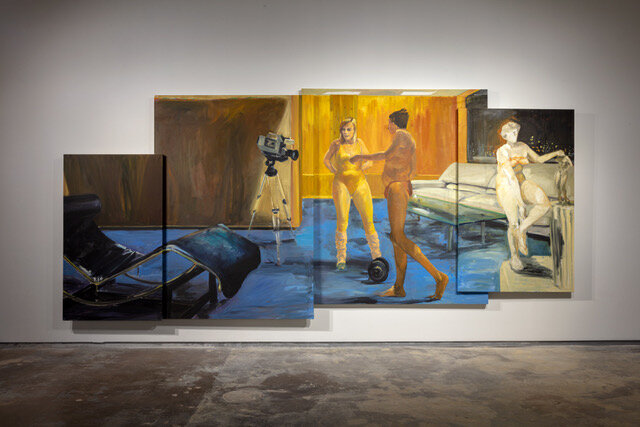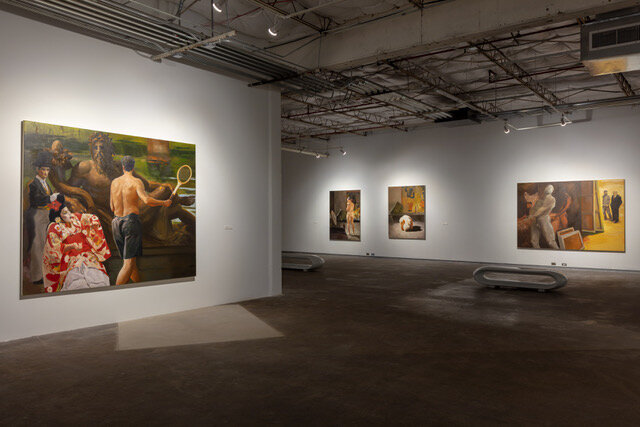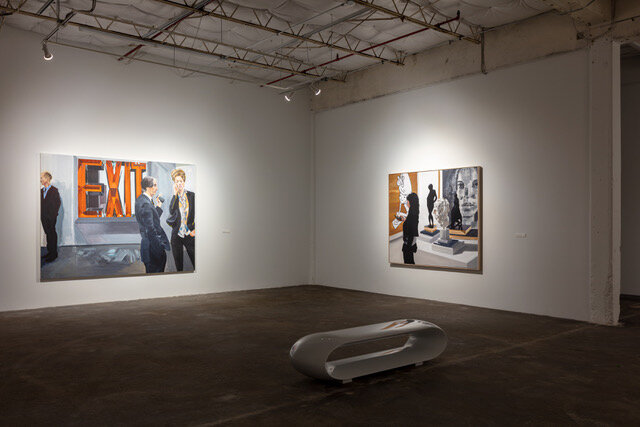eric fischl
if art could talk
11 april - 26 august 2018
curated by executive director peter doroshenko
Eric Fischl reflects on contemporary thought through the language of history. In Fischl’s artworks communication is non-existent and boredom is always relevant. He incorporates most of a hierarchy of subjects together to create his own unique lineage of information to capture current universal conditions. This exhibition was the largest exhibition of Fischl’s work since the 1980s and focused on his long history of incorporating art objects into his own paintings.
Eric Fischl is one of only a handful of contemporary painters who regularly, though by no means exclusively, employs sourced images, culled from the internet, newspapers, and magazines, to inform his paintings. Fischl adds his own photographs and blends a final ensemble of information and storytelling.
The installation of the exhibition, If Art Could Talk, centered around a grand hall similar to 19th Century museums in Europe. Smaller galleries off of the larger space created focused venues for sub-themes and historical timelines with the artist’s long career.
Thirty-two paintings from 1980 to 2017 were included in the exhibition with loans from various museums and private collections from the United States and Europe. With many works coming directly from global private collections, certain paintings were seen by museum visitors for the first time.
Stories of arts patrons, collectors, friends and imaginary individuals blend together in Fischl’s paintings. Fischl enjoys the artistic freedom of painting and he is closely tied to the medium’s history. The velvety, liquid paint handling in his works recalls the nineteenth-century French painter Édouard Manet and seventeenth-century Spanish painters such as Diego Velázquez.
Much like his early layering of canvases on top of each other to expand the scale of his paintings, at various points in the final installation included non-traditional hangings to create a visual deconstruction of the painted realities.
Though not a portrait painter, Fischl enjoys incorporating various individuals into his works as stand alone subject matter. His final paintings are never linked to an individual, but continue his on-going stories of social classes and American unease.
Fischl’s painting Rift/Raft, 2016, a diptych combination of a booth at a contemporary art fair and a refugee beach landing, is not the typical definition of history painting. No kings or generals or battles move across Fischl’s canvases, and most of his subjects are the opposite – suburban bourgeois families, art world mongers, and awkward or tragic social interactions.
This series of paintings takes as its subject the contemporary art market, specifically art fairs. The paintings depict art fairs and some gallery openings, and feature intricate compositions where people and artworks are layered in sophisticated arrangements of form and color. The art works by other artists become strange and banal backdrops to the painted individuals in the forefront of each work.
As the Art Fair Paintings series grew during the early 2010s, so did the complexity of the images, the individuals in the works and relationships between each other. The paintings are a sharp social satire as much as they are a larger narrative to the world the artist knows best - the international art scene.









